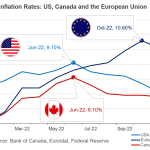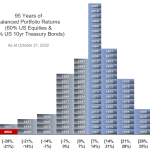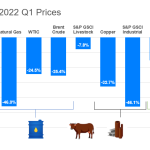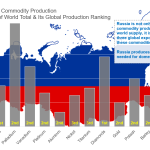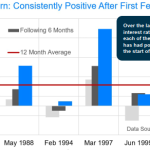economic landscape.
In
addition to the sales volume
drought, average home prices are also exhibiting weaknesses.
In
Vancouver, widely considered Canada’s “bubbliest” city, average single
family home sale prices are down over 14% from their highs and average
condo prices are close to 2007 levels (
Brian
Ripley’s CHPC).
The
decade long shift in leadership between Canadian and US housing prices
is best observed through our charts on relative US/Canadian housing
markets (Section D–chart library).
Canadian markets of Vancouver, Toronto, and Montreal have now all
reversed bullish trends versus US markets which had been in place since
December of 2005 (See Vancouver Chart below). The only major
exception is Calgary, where home prices have continued their sideways
move relative to US home prices which began in
2009.
Chart
2)

Click Here to view a larger version of
this diagram
Leading
indicators of the economy
The
strength of the US and weakness of Canada is not confined to real
estate markets. Since our last update to the Canadian Real
Estate
Chartbook in December 2012, a pronounced shift in both Canadian and US
economies has taken place. The Canadian economy, once the envy of
Americans, Europeans, and others, is now widely viewed as a commodity
dependent, “one trick pony”.
Nothing better illustrates the economic differential than the OECD’s
leading economic indicators, which we first cited in our Winter 2013 newsletter
and are updated below. Canadian leading economic indicators
are
now falling behind US leading indicators by the widest margin in over
two decades.
Chart
3) – new

Click Here to view a larger version of
this diagram
Stock
markets, which are themselves a leading indicator of the future state
of the economy, have also diverged from one another. The Canadian
market and its foremost index, the S&P TSX composite, has
lagged
its US counterpart the, S&P 500, for the better part of two
years. In the interest of brevity we direct readers
interested in
a more detailed explanation of the divergence to our recently published
Spring 2013 newsletter.
Alternatively, the following chart is presented below illustrating the
extent of the recent Canadian underperformance. This ominous
pattern could foreseeably continue should drivers of the Canadian stock
market, notably global commodity demand, continue to weaken.
Chart
4) – new

Click Here to view a larger version of
this diagram
The
leading economic indicator which gives the most reason for pause is the
slowing new Canadian home starts, which are now declining on a
year-over-year basis and doing so at the fastest rate since the
financial crisis (see below). Bank of Montreal economist Sal
Guatieri recently addressed this fact by stating, “Canadian
home builders are facing the new reality that the decade-long housing
boom has ended” (Globe and Mail).
With 20% of Canadian GDP directly involved in construction and real
estate activities, a continued slowdown in housing-starts will have a
marked impact on the consumer behavior and ripple through other
consumer sensitive areas of the economy, including retail sales,
financial services, transportation, and warehousing.
Chart
5) – new

Click Here to view a larger version of
this diagram
Lacking
confidence
As
a consumer-driven asset class, real estate is intimately tied to
domestic consumer outlook. Due to this, it is important to note that
Canadian consumer confidence has slid stealthily lower since peaking in
early 2010. In fact, consumer confidence is now approaching
the
same levels last seen immediately following the financial crisis! (see
chart below).
Chart
6) – new

Adding
to the decline in consumer confidence are recent employment numbers
that indicate private Canadian companies, those most indicative of
overall economic health, shed 105,400 jobs in March and April
2013. This number of private sector job loss again mimics the
numbers last witnessed during the financial crisis.
The weakness in
the Canadian job market may come as a surprise to some readers as news
headlines
often indicate a reduction in the unemployment rate. The unemployment
rate has
been on a downward trend since the end of the recession, however, it
has stubbornly
failed to fall below 7%. This
is in
comparison to the sub 6% unemployment rates seen in Canada before the
recession.
In addition,
the overall unemployment rate does not always capture the true inherent
weakness in the employment environment due to the often misleading
inclusion of
individuals indicating their status as “self-employed”. Chief economist of Gluskin
Sheff, David
Rosenberg, recently commented on the significance of swelling US
self-employed
ranks by stating, the self-employed are, “…consultants
working out of their
basement offices and not exactly picking up much business…“
(Barrons). Thus the loss of private
sector jobs is a
critical weakness in the Canadian economy also voice by Benoit
Durocher, senior
economist of Desjardins Securities, “The
replacement of private-sector jobs
with independent work is usually not a sign of a healthy labour market.”
Globe and Mail
These findings
on unemployment are echoed in Canadian “Misery Index” (inflation +
unemployment rates), as illustrated below.
All major markets are signaling
upticks in misery. Toronto,
Montreal, and Vancouver are
exhibiting it above pre-recession lows, this despite barely-existent
inflation
and employment numbers that are likely understating reality.
Chart
7)

Click Here to view a larger version of
this diagram
Debt
burdens
We
reiterate our belief that the Canadian housing bull market of the last
decade has been primarily driven by credit expansion, a.k.a. increased
debt levels by Canadians. Readers are directed to Chart A2
in the chart library for support of this belief.
The desire for Canadians to take on more debt and thus more risk has
largely been due to low interest rates which now stand at a
generational low of less than 2% as indicated by 10 year government of
Canada bonds. These low rates have allowed for enhanced
cash-flow-affordability (not to be mistaken with actual affordability)
as home owners’ monthly mortgage interest expense has declined by –
over 11% since 2009. Notably, all other major components of
home
ownership costs including replacement costs, property taxes, insurance,
maintenance, furnishings, and miscellaneous expenses have grown at
least as must as Canadian core inflation and in some cases more than
twice as much! (See below)
Chart
8) – new

Click Here to view a larger version of
this diagram
How
large has the outstanding mortgage and consumer debt grown to?
Statistics Canada reported that in the final quarter of 2012 the
average Canadian household owed $164.97 in debt for every $100 of
disposable, after-tax income. In total, Canadian households now hold a
combined $1.1 trillion of mortgage debt and $477 billion of consumer
debt (Huffington Post).
To put this number into perspective, it is a large enough sum to
purchase every single publicly traded stock share listed on either the
Australian stock exchange (ASX), or the SIX Swiss Exchange, or even the
Deutsche Börse of Germany. The size of this debt relative to
the
entire Canadian economy (GDP) and its progression over time is
illustrated below. Canadian debt levels relative to GDP
appeared
to have now stalled near the 90% levels and the growth rate is far
below the heady days witnessed prior to 2010.
Chart
9)

Click Here to view a larger version of
this diagram
An
important finding that emerged recently is that Canadian debt burdens
are not largely borne by young first-time home owners desperate to get
into the housing market and thus overpaying and overleveraging
themselves. In fact, bankruptcy trustees Hoyes, Michalos
&
Associates were recently cited in a study finding that the highest debt
levels occur in the 50 to 59 year old age demographic. As one
trustee at the firm stated, “At a time
in their lives when they should be rapidly paying down debt, their
financial burden continues to grow.” (Canada Newswire)
This finding further identifies limitations on future credit expansion
and emphasizes the impact that demographic challenges will have on
Canadian real estate. Effectively, debt-burdened Canadians
approaching or entering retirement will be more reliant on wealth
currently locked in the form of home-equity. We touched on
the
role of Canadian demographics in real estate valuation in our last
chartbook (Chartbook Dec 2012)
Canadian
consumer debt burdens and the dependence on it by the domestic economy
and real
estate are best summarized by the Bank of Canada itself: “These
measures
[tightening government-insured mortgage lending standards] reduce
the
number one risk … to
the Canadian economy,“
– Former Governor of the
Bank of Canada Mark Carney, June 21 2012 Reuters
The
slowdown
The economic slowdown in Canada is difficult to ignore – the
International Monetary Fund (IMF) cut its growth outlook for Canada’s
economy to 1.5% from 1.8%, the weakest growth rate since the financial
crisis (Globe and Mail).
The Bank of Canada itself also cut domestic growth estimates in April
while indicating emergency-level low interest rates would persist (Maclean’s).
Despite low rates, the net result of such events is likely a headwind
for Canadian real estate markets. Sustained weakness in the
economy will only serve to burden Canadian consumers further.
In
addition, Canadian consumers have already extrapolated the persistence
of low interest rates further into the future than the Bank of
Canada. In other words, consumers have already reflected a
prolonged low rate environment into home price valuations.
Words
of the wise
A portion of our last commentary was dedicated to a summary of policy
errors that led up to the current state of excessive Canadian mortgage
debt. Recent tightening by the Finance Minister on lending
standards, although generally considered prudent, has been lobbied
against by those in the lending industry. The question now emerges:
Will Canadian Finance Minister, Jim Flaherty, reverse course on last
year’s mortgage tightening in the face of a weakening Canadian
economy? If his future actions are consistent with recent
statements made in Britain to the G7 finance ministers, then the answer
is “no”. Minister Flaherty was vocal in indicating that the
lack
of resolve by other G7 finance ministers to stick with debt reducing
austerity measures was an error. (Reuters)
At this
latest G7 meeting, not only did Minister Flaherty provide insight on
his
conviction to stick to austerity despite the economic hardships that it
creates,
he also shed light on how Canadian policy makers truly viewed the
Canadian
housing market prior to the latest round of tightening. “We are
seeing
moderation in the Canadian housing market. We did not have a bubble, but we
had the
beginnings of the indications of a bubble.”
– Jim Flaherty (Reuters). Readers are reminded that
any stronger
statement as to the existence of a bubble would be unlikely since it is
common practice
for policy makers to attempt to “talk down” fears.
Summary
We remain
bearish on the Canadian real estate market with real estate appearing
overvalued by approximately 30% in most major markets (See table). Canadian economic
weakness, the expected
contraction of outstanding consumer credit, and already heightened real
estate
prices serve as the basis for our bearish stance.
An update of
this chartbook will be made available in October/November 2013.
Real estate chartbook library
All charts not
referenced above are included below:
Due to changes with Google trends data, the housing bubble sentiment
grid has been discontinued.
Section A: Economics
Chart A1) Wages
vs. Home Price Growth
Chart A2) Canadian GDP, Home Prices, and Outstanding Mortgage Credit
Chart A3)
Population Growth and Housing Capacity
Chart A4) Consumer Credit Growth
Section B:
Valuation
Chart B1) Home
Prices over Present Value of Rents Chart
Table B1) Home Prices over Present Value of Rents Table
Chart B2) Home
Prices to Rents
Section C:
Real Index Values
Chart C1)
Canadian Real Rent Index
Chart C2) Canadian Real Home Price Index
Section D:
Canadian versus US Real
Estate
Chart D1) US Home
Prices vs Vancouver Home Prices –
Presented above in report Chart D3) US Home
Prices vs Toronto Home Prices Chart D4) US Home
Prices vs Montreal Home Prices
Chart D5) US Home
Prices vs Calgary Home Prices Section E:
City Summaries,
Home Price QoQ change, Inflation, Unemployment
Chart E1)
Vancouver
Chart E2) Edmonton
Chart E3) Calgary
Chart E4) Winnipeg
Chart E5) Toronto
Chart E6) Ottawa
Chart E7) Montreal
Chart E8) Halifax
Section F:
Home Price and Sales Pair
Volume Change for Major Canadian Cities
Chart F1) Canada
Chart F2) Vancouver
Chart F3) Calgary
Chart F4) Toronto
Chart F5) Ottawa
Chart F6) Montreal
Chart F7) Halifax
Section G:
Stocks vs Real Estate
Chart G1)
Canadian Stocks vs Canadian Real Estate (Long Term)
Chart G2) Canadian Stocks vs Canadian Real Estate (Medium Term)
Chart G3) US Stocks vs US Real Estate (Long Term)
Chart G4) US Stocks vs US Real Estate (Medium Term)
Section
A) Economics Return to Library
Chart
A1) Wages
vs. Home Price Growth
Canadian
wage growth versus home price appreciation from Feb 2003 to Mar 2013 is
reported below. Average weekly wage growth per home province
of
each city is reported. Also, only wages of full time workers
between the ages of 25 and 54 were examined in an attempt to capture
changes to the buying power potential of
first-time-homebuyers. In all ten markets examined, home
price
appreciation far surpassed average weekly wage growth.

Click Here to view a larger version of
this diagram Chart
A2) Canadian GDP, Home
Prices, and Outstanding Mortgage Credit
Appreciation
in Canadian home prices (from January 2000 onward) has more closely
reflected growth in mortgage credit rather than growth in Canadian
nominal GDP.

Click Here to view a larger version of
this diagram
Chart
A3) Population
Growth and Housing Capacity
In
all major Canadian housing markets housing capacity growth has exceeded
population increases between 2002 and March 2013. Calgary,
Edmonton, Ottawa, Montreal and Halifax are what we would consider to be
“severely overbuilt” with excess housing capacity of roughly 50% or
more than population growth over the same period. Vancouver,
Toronto, and Winnipeg, are “overbuilt” with excess housing capacity
close to 20% more than population growth over the examined
period.
Housing
capacity is defined as the number of individuals that can be reasonably
housed in new housing units, whether or not a new housing unit sits
unoccupied, under-occupied, or over-occupied. Assumptions
made
may be more appropriate for some markets over others.

Click Here to view a larger version of
this diagram
Chart
A4) Consumer
Credit Growth
Despite
falling interest rates, Canadian consumer credit growth has slowed to
the lowest levels in more than 12 years. This observation is
despite the fact that real bond yields, or inflation adjusted yields,
have dropped significantly. The axis on the right in
red
tracks 3 to 5 year real Canadian government bond yields which are now
below zero. In other words, interest income on these bonds
are no
longer sufficient to overcome lost purchasing power from the effects of
inflation. Should consumer and mortgage credit begin to
contract
then this will serve as a major headwind to future real estate
appreciation.

Click Here to view a larger version of
this diagram
Section
B) Valuation Return to Library
Chart B1) Home Prices
over Present Value of Rents
In
theory, residential real estate prices should equal the discounted sum
of future rental income. As a result, we have attempted to
estimate fair values for residential real estate in major cities by
comparing actual prices to theoretical discounted prices (valuation
ratio). In theory, this ratio should equal one and deviations
from this value should regress back to the value one over
time.
Note, discounted cash flow calculations are highly volatile and
dependent on underlying model assumptions. However based off
of
this methodology, Canadian real estate appears extremely expensive in
most major markets. Canadian real estate only appears
somewhat
reasonably priced if the assumption that current emergency low interest
rates continue indefinitely into the future. Any increase in
interest rates to even pre recession levels (which were also
historically low) causes Canadian real estate as a whole to appear
grossly overvalued.

Click Here to view a larger version of
this diagram Table B1) Home Prices
over Present Value of Rents
Using
the data from Chart B1 above, the following table attempts to quantify
the degree of price correction necessary to return the valuation ratio
in these five real estate markets back to the historical average
valuation ratio. The price corrections necessary to return
the
valuation ratio to the historical moving average range from -39% in
Montreal, to -31% in Edmonton.
Click Here to view a larger version of
this diagram Chart B3) Home
Prices to Rents
Canadian
home prices are currently not in line with historic multiples of
residential rental prices. Most extended from historical
norms
are Vancouver, Montreal, and Toronto. While Edmonton and
Calgary,
are elevated from historic averages but below previous witnessed
highs.

Click Here to view a larger version of
this diagram
Section
C) Real Index Values Return to Library
Chart
C1) Canadian
Real Rent Index
Canadian
residential rent increases have not historically kept pace with
inflation. While Canadian housing prices have surged higher,
renting has become relatively cheaper. This is evident from
the
chart below indicating long term trend of real-rents (inflation
adjusted) has been downward in most Canadian cities. This has
implications for retirees expecting to utilize rental income to finance
long term retirement expenditures. As with non inflation
indexed
bonds, cash flows from Canadian real estate may prove to be ineffective
to satisfy future increases in the cost of living. This is in
addition to the fact that residential real estate in Canada already
possess low rental yields, or the net annual rental income generated
from a property dividend by the current market value of the property.

Click Here
to view a larger version of
this diagram Chart
C2) Canadian
Real Home Price Index
Long
term real (inflation adjusted) annual home price returns have exceeded
3% in Vancouver and Victoria BC, while exceeding 1.5% in most other
large Canadian cities. Edmonton is the only exception with a
compounded annual house price appreciation of 0.64% over the examined
period. To put this into perspective, numerous examinations
of
long term real US home price appreciation indicate that they have only
slightly exceeded inflation at an approximate annual compounded rate of
0.5% per year.

Click Here to view a larger version of
this diagram
Section
D) Canadian versus US Real Estate
Return to Library
Chart
D2) US
Home Prices vs Toronto Home Prices

Click Here to view a larger version of
this diagram
Chart
D3) US
Home Prices vs Montreal Home Prices

Click Here to view a larger version of
this diagram
Chart
D4) US
Home Prices vs Calgary Home Prices

Click Here to view a larger version of
this diagram Section
E) Canadian City Summaries
Return to Library
The
following charts display a time series of unemployment, vacancy rates,
and quarterly home price changes for: Vancouver, Calgary, Edmonton,
Winnipeg, Ottawa, Toronto, Montreal, and Halifax.
Chart
E1) Vancouver

Click Here to view a larger version of
this diagram
Chart
E2) Edmonton

Click Here to view a larger version of
this diagram
Chart
E3) Calgary

Click Here to view a larger version of
this diagram
Chart
E4) Winnipeg

Click Here to view a larger version of
this diagram
Chart
E5) Toronto

Click Here to view a larger version of
this diagram
Chart
E6) Ottawa

Click Here to view a larger version of
this diagram
Chart
E7) Montreal

Click Here to view a larger version of
this diagram
Chart
E8) Halifax

Click Here to view a larger version of
this diagram
Section
F) Home Price and Sales Pair Volume Change for Major Canadian
Cities
Return to Library
The
following charts indicate annual changes in monthly home prices and
“sales pair” volume. Data has been generously made available
by Teranet – National Bank for: Canada, Vancouver, Calgary, Ottawa,
Toronto, Montreal, and Halifax. Please visit
http://www.housepriceindex.ca/ for the definitions and methodologies
used calculating their indices.
Chart
F1) Canada

Click Here to view a larger version of
this diagram
Chart
F2) Vancouver

Click Here to view a larger version of
this diagram
Chart
F3) Calgary

Click Here to view a larger version of
this diagram
Chart
F4) Toronto

Click Here to view a larger version of
this diagram
Chart
F5) Ottawa

Click Here to view a larger version of
this diagram
Chart
F6) Montreal

Click Here to view a larger version of
this diagram
Chart
F7) Halifax

Click Here to view a larger version of
this diagram
Section
G) Stocks versus Real Estate
Return to Library
Canadian
Real Estate versus Canadian Stocks (S&P TSX Index)
US
Real Estate versus US Stocks (S&P 500 Index)
Chart
G1) Canadian
Stocks vs. Canadian Real Estate (Long Term)
Displayed
in the chart below are Canadian home prices as a ratio of the TSX index
(Canadian stock market) from 1977. Seven cities are included:
Vancouver, Victoria, Calgary, Edmonton, Regina, Toronto, and
Montreal. Over the long term, home prices in Canada have
lagged price appreciation of stocks. Note, the stock index
below is a “price index” and therefore, excludes payment of dividends.

Click Here to view a larger version of
this diagram Chart
G2) Canadian
Stocks vs. Canadian Real Estate (Medium Term)
Displayed
in the chart below are Canadian home prices as a ratio of the TSX index
(Canadian stock market) from 1998. Nine cities are included:
Vancouver, Victoria, Calgary, Edmonton, Regina, Ottawa,
Toronto, Montrea, and Halifaxl.
Over the long term, home prices in Canada have lagged price
appreciation of stocks. Note, the stock index below is a
“price index”
and therefore, excludes payment of dividends.

Click Here to view a larger version of
this diagram
Chart
G3) US Stocks vs
US Real Estate (Long Term)
For
comparison purposes the following two charts (Chart G3 and Chart
G4) have also been included which display US home
prices as a multiple of the S&P 500 (US stock
market). The chart immediately below displays US home prices
as a ratio of the S&P 500 index (US stock market) from 1987
onward. Fourteen US cities are included in the chart below as
well as a composite index of ten major US Cities. Over the
medium term, home prices in Canada have outperformed price appreciation
of stocks. Note, the spike on the charts observed at March
2009 represent the stock market bottom during the financial crisis.

Click Here to view a larger version of
this diagram
Chart
G4) US Stocks vs
US Real Estate (Medium Term)

Click Here to view a larger version of
this diagram
Thank you to the following data providers:
